Description
The instruction for medical use of Valmak Torgovoye medicine a name Valmak Mezhdunarodnoye the unlicensed name Valsartan Lekarstvennaya the Tablet form film coated 40 mg, 80 mg, 160 mg, 320 mg Structure One tablet contains active agent – valsartan 40 mg, 80 mg, 160 mg, 320 mg, excipients: cellulose microcrystalline (Avitsel PH 101), krospovidon (Poliplasdon XL), silicon dioxide colloidal (Aerosil 200), magnesium stearate, structure of a cover of 40 mg: Opadray yellow 03F82329 (gipromelloza, titan dioxide (E 171), polyethyleneglycol 8000 (macrogoal), talc, ferrous oxide yellow (E 172)), structure of a cover of 80 mg: Opadray pink 03F84641 (gipromelloza, titan dioxide (E 171), polyethyleneglycol 8000 (macrogoal), talc, ferrous oxide yellow (E 172), ferrous oxide red (E 172)), structure of a cover of 160 mg: Opadray yellow 03F520004 (gipromelloza, titan dioxide (E 171), polyethyleneglycol 8000 (macrogoal), talc, ferrous oxide yellow (E 172), ferrous oxide red (E 172), ferrous oxide black (E 172)), structure of a cover of 320 mg: Opadray violet 02F50251 (a gipromelloza, the titan dioxide (E 171), polyethyleneglycol 8000 (macrogoal), talc, ferrous oxide red (E 172), ferrous oxide black (E 172)), the Description of Yellow color, oval, biconvex tablets covered with a film cover with an engraving L 12 and dividing risky on one party and smooth on the other hand (for a dosage of 40 mg). Light-red color, oval, biconvex tablets, film coated, with an engraving L 13 on one party and smooth on the other hand (for a dosage of 80 mg). Gray-orange color, oval, biconvex tablets, film coated, with an engraving L 14 on one party and smooth on the other hand (for a dosage of 160 mg). Dark gray-violet color, oval, biconvex, tablets, film coated, with an engraving L 15 on one party and smooth on the other hand (for a dosage of 320 mg). Pharmacotherapeutic group the Drugs influencing a system renin-angiotensin. Angiotensin ІІ antagonists. Valsartan the ATX C09CA03 Code the Pharmacological Pharmacokinetics Absorption Later properties of reception of a valsartan inside, the maximum concentration of a valsartan in blood plasma are reached within 2-4 hours in case of use of tablets and 1-2 hours at solution use. The value of average absolyutnay bioavailability is 23% and 39% for tablets and solution respectively. When assigning with AUC food (the area under a curve concentration time) Cmax approximately for 50%, however, later after reception decreases 8 hours approximately by 40%, concentration of a valsartan in blood becomes identical at the patients taking the drug with food and at those who received drug separately. Such decrease in AUC is not followed by clinically significant decrease in therapeutic effect of drug therefore valsartan it is possible to accept irrespective of meal. Distribution the Equilibrium volume of distribution of a valsartan after intravenous administration makes about 17 liters that demonstrates to what valsartan actively does not get into fabrics. Valsartan has high affinity to proteins of blood plasma (94-97%), generally to albumine. Biotransformation Valsartan is not exposed to active biotransformation, only 20% break up to metabolites. In blood plasma the inactive hydroxymetabolite in low concentration (less than 10% of AUC of a valsartan) is found pharmacological. Removal the Kinetics of disintegration of a valsartan has multiexponential character (t½α & lt, 1 h and t½ß oklo 9 h). Valsartan is brought mainly with a stake (about 83% of a dose) and urine (about the 13th dose), generally in an invariable look. After intravenous administration the plasma clearance is about 2 l/h, and renal clearance – 0.62 l/h (about 30% of the general clearance). Elimination half-life of a valsartan is equal to 6 hours. Special categories of patients Patients of advanced age At a number of patients of advanced age the system exposure of a valsartan was slightly higher, than at young patients, however, these data are not clinically significant. The renal failure As one would expect for connection, renal clearance makes only 30% of the general plasma clearance, the correlation between function of kidneys and system exposure of a valsartan is absent. Therefore at treatment of patients with a renal failure (clearance of creatinine & gt, 10 ml/min.) of dose adjustment of drug it is not required. Now experience of safe use of drug for treatment of patients with clearance of creatinine & lt, 10 ml/min., or being on dialysis no therefore in these groups of patients it is recommended to be careful at treatment valsartany. Valsartan has high affinity to proteins of blood plasma, and is not brought by means of dialysis. The abnormal liver function About 70% of the absorbed dose is removed with bile, generally in an invariable look. Valsartan does not undergo significant biotransformation. Patients with a weak and moderate abnormal liver function have an increase in exposure twice (AUC). However, correlations between concentration of a valsartan in blood plasma and degree of an abnormal liver function it is not revealed. Use of a valsartan was not investigated at treatment of patients with a heavy abnormal liver function. The pharmacodynamics Valsartan is an effective and specific antagonist of receptors of angiotensin II for intake. It affects selectively AT1 subtype receptors which are responsible for the known effects of angiotensin II. Free AT2 receptors can stimulate increase in concentration of angiotensin II in blood plasma owing to blockade of AT1 receptors valsartany that counterbalances effect of AT1 receptors. Valsartan does not possess partial agonistic action concerning receptors of AT1 and possesses higher (approximately by 20.000 times) affinity to AT1 receptors, than to AT2 receptors. valsartan does not show the significant agonistic activity concerning AT1 receptors. The affinity of a valsartan to AT1 receptors is about 20,000 times higher, than to AT2 receptors. Valsartan does not enter interaction and does not block the receptors of other hormones or ion channels which are important for regulation of functions of a cardiovascular system. Valsartan does not inhibit APF (also known as a kinase of II) which turns angiotensin I into angiotensin II and destroys bradykinin. Due to the lack of influence on APF, potentiation of effects of bradykinin and substance P is absent therefore at reception of antagonists of angiotensin II the development of dry cough is improbable. Indications – treatment of arterial hypertension at adult patients and arterial hypertension at children and teenagers from 6 to 18 years the Route of administration and doses the Dosage Valmak is accepted irrespective of meal, washing down with water. The recommended initial dose of Valmak makes 40 mg two times a day. It is necessary to increase Valmak’s dose by titration method to 80 mg or 160 mg two times a day, with intervals not less than 2 weeks before achievement of the maximum dose, taking into account tolerance of drug the patient. It is necessary to lower a dose of diuretics which are accepted together with Valmak. The maximum daily dose of Valmak makes 320 mg, divided into several receptions. Valmak it is possible to accept along with other drugs. However use of a ternary combination of APF inhibitor, a valsartan and beta-blocker or potassium – the preserving diuretic is not recommended. At inspection of patients with heart failure the careful control of function of kidneys is necessary. Patients of advanced age At treatment of patients of advanced age of dose adjustment it is not required. The renal failure At treatment of adult patients with clearance of creatinine & gt, 10 ml/min. of dose adjustment is not required. The liver failure At treatment of patients with poorly or moderate abnormal liver function which is not followed by a cholestasia, a dose of a valsartan should not exceed 80 mg. Valsartan is contraindicated to patients with a heavy liver failure Children’s arterial hypertension Children and teenagers aged from 6 up to 18 years the Initial dose makes 40 mg of 1 times a day for children with body weight to 35 kg, and 80 mg of 1 times a day for children with the body weight of 35 kg or more. The dose should be adjusted on the basis of results of arterial blood pressure. The maximum doses which were used in clinical trials are specified in the following table. Doses which are higher listed below, were not investigated and therefore are not recommended for use. Body weight the Maximum doses applied in clinical trials of ≥18 kg to & lt, 35 kg 80 mg ≥35 kg to & lt, 80 kg 160 mg ≥80 kg up to ≤160 kg 320 mg Children and teenagers with a renal failure aged from 6 up to 18 years At treatment of children with clearance of creatinine & gt of 30 ml/min. of dose adjustment is not required. It is necessary to control carefully function of kidneys and content of potassium in blood serum. Children and teenagers with an abnormal liver function aged from 6 up to 18 years there Is a limited experience of clinical use of a valsartan for treatment of children with poorly or moderate abnormal liver function. In this case the dose of a valsartan should not exceed 80 mg. Valsartan is contraindicated to children with heavy abnormal liver functions. Duration of a course of treatment is defined by the attending physician. Side effects the Frequency of emergence of side reactions is estimated thus: very often (& gt, 1/10), it is frequent (from & gt, 1/100 to & lt, 1/10), is not frequent (from & gt, 1/1000 to & lt, 1/100), is rare (from & gt, 1/10000 to & lt, 1/1000), is very rare (& lt, 1/10000). At patients with arterial hypertension Often – a hyperpotassemia Infrequently – dizziness – cough – fatigue – an abdominal pain – increase in arterial blood pressure at children Is unknown (it is impossible to estimate frequency on the basis of the available data) – decrease in level of hemoglobin, decrease in a hematocrit, thrombocytopenia, a neutropenia – hypersensitivity, including orrhoreaction – increase in content of potassium in blood serum, a hyponatremia – a vasculitis – increase in values of functional trials of a liver, including increase in content of bilirubin in blood serum – increase in urea in blood serum – myalgia – a renal failure, a renal failure increase in concentration of creatinine in blood serum – a Quincke’s disease, rash, an itching, bullous dermatitis At the patients who had a myocardial infarction and/or with heart failure Often – dizziness, vertigo – arterial hypotension, orthostatic hypotension – a renal failure, a renal failure Infrequently – a hyperpotassemia – a faint, a headache, dizziness – weakness, an asthenia, fatigue – heart failure – cough – nausea, diarrhea – a Quincke’s disease – an acute renal failure, increase in concentration of creatinine in blood serum Is unknown (it is impossible to estimate frequency on the basis of the available data) – thrombocytopenia – hypersensitivity, including orrhoreaction – a vasculitis – increase in levels of liver enzymes – rash, an itching, bullous dermatitis – myalgia – increase in levels of urea nitrogen, blood – increase in potassium in blood plasma, the Contraindication hyponatremia – hypersensitivity to active ingredient or any of drug excipients and also to soy oil and peanut butter – the profound abnormal liver functions, biliary cirrhosis, a cholestasia – simultaneous use of antagonists of receptors of angiotensin, including valsartan, or APF inhibitors with aliskireny at patients with diabetes 2 types or a renal failure (SKF & lt, 60 ml/min. / 1.73 sq.m) – a galactosemia, deficiency of Lappa lactase or a sprue of glucose galactose – pregnancy and the period of a lactation – children’s age up to 6 years – children and teenagers aged from 6 up to 18 years: – with a renal failure with clearance of creatinine & lt, 30 ml/min. and also the patients of children’s age receiving dialysis – with a heavy abnormal liver function, biliary cirrhosis and with a cholestasia – with heart failure and recently postponed myocardial infarction Medicinal interactions of Lities Were reported about reversible increases in serumal concentration of lithium and toxicity when sharing APF inhibitors. Considering lack of experience of the combined use of a valsartan and lithium, use of such combination is not recommended. If this combination is necessary according to clinical indications, it is recommended to control serumal levels of lithium carefully. In case of need uses of this combination, it is necessary to carry out careful monitoring of level of lithium in blood serum. The potassium-preserving diuretics, potassium additives, the salt substitutes containing potassium, and other substances capable to increase potassium levels If joint with valsartany use of the medicine influencing potassium levels it is recognized as necessary, it is recommended to control potassium levels in plasma. It is necessary to be careful at simultaneous use: Non-steroidal anti-inflammatory drugs (NPVS), including selection TsOG-2 inhibitors, acetylsalicylic acid (& gt, 3 g/days) and non-selective NPVS At co-administration of antagonists of angiotensin II with NPVS, decrease in hypotensive effect can arise. Besides, simultaneous use of antagonists of a receptor of angiotensin II and NPVP can result in the increased risk of deterioration in function of kidneys and increase in content of potassium in blood serum. For this reason, it is recommended to control function of kidneys in an initiation of treatment and also to provide appropriate hydration of the patient. Valsartan conveyors is substrate of hepatic capture OATP1B1/OATP1B3 and substrate of the conveyor of hepatic outflow of MRP2. The combined use of inhibitors of the conveyor of capture (for example, rifampicin, cyclosporine) or the outflow conveyor (for example, ritonavir) can increase system influence of a valsartan. Other clinically significant interaction of a valsartan with the following substances is not revealed: Cimetidinum, warfarin, furosemide, digoxin, atenolol, indometacin, hydrochlorothiazide, amlodipiny, glibenclamide. Use in pediatrics Is recommended to be careful at the combined treatment of children and teenagers with arterial hypertension at whom often pervoprichinny state is the renal failure, valsartany and other drugs inhibiting renin-angiotensin-aldosteronovuyu a system which can lead to increase in content of potassium in blood serum. Careful monitoring of function of kidneys and content of potassium in blood serum is required. The special instructions Hyperpotassemia Not combined use with potassium additives, potassium – the preserving diuretics, the salt substitutes containing potassium or other drugs which can increase potassium level is recommended (heparin, etc.). As required it is necessary to exercise control of potassium level in blood. Patients with deficiency of sodium and/or liquid in an organism At patients with the significant deficiency of sodium and/or intercellular liquid in an organism, including those who receive high doses of diuretics, symptomatic hypotension after the beginning of therapy valsartany in rare instances can develop. Before therapy by drug it is necessary to correct levels of sodium and intercellular liquid in an organism, for example, by reduction of a dose of diuretics. A stenosis of renal arteries Safety of use of Valmak for treatment of patients with a bilateral stenosis of renal arteries or a stenosis of an artery of the only kidney is not established. Did not lead short-term reception of a valsartan by twelve patients with renovascular arterial hypertension against the background of a unilateral renal artery stenosis to significant changes in hemodynamic indicators of a kidney, concentration of creatinine in blood serum or the blood urea nitrogen (BUN). However, patients with a unilateral renal artery stenosis have a use of other drugs which influence renin-angiotenzinovuyu a system, can lead to increase in concentration of urea nitrogen of blood and creatinine of blood serum therefore at treatment of these patients valsartany it is necessary to control function of kidneys carefully. Transplantation of a kidney Now data on safe use of Valmak for treatment of the patients who recently transferred transplantation of a kidney no. Patients with perv
a chny hyper aldosteronism should not appoint primary hyper aldosteronism Valmak as their renin-angiotenzinovaya the system is inactive. A stenosis of the aortal and mitral valve, a subaortic hypertrophic stenosis As well as in a case with any vasodilators, it is necessary to approach with extra care treatment of the patients having a stenosis of the aortal or mitral valve and also a hypertrophic subaortic stenosis (GOKM). Disturbance of functions of kidneys Now experience of safe use of drug for treatment of patients with clearance of creatinine & lt, 10 ml/min. and at the patients who are on dialysis is absent therefore at treatment of these groups of patients by Valmak, it is necessary to show care. Patients Should appoint an abnormal liver function with care Valmak with abnormal liver functions easy and to moderate severity without cholestasia Recently postponed myocardial infarction It was shown that the combined treatment by captopril and valsartany does not give additional clinical benefits, for that increases risk of development of the undesirable phenomena, in comparison with reference schemes of treatment. Therefore the combined treatment valsartany and APF inhibitors is not recommended. It is necessary to be careful, beginning treatment of the patients who had a myocardial infarction. Inspection of the patients who had a myocardial infarction always has to include assessment of function of kidneys. Valmak’s reception by patients with a postinfarction state can cause some lowering of arterial pressure, however, on condition of observance of instructions for dosing, drug withdrawal because of the remaining symptomatic arterial hypotension not always is obligatory. Heart failure Risk of development of undesirable side effects, in particular hypotension, a hyperpotassemia and a renal failure, can will increase at Valmak’s reception in a combination with APF inhibitors. Patients with heart failure have a ternary combination of APF inhibitor, a beta-blocker and a valsartan, has no clinical advantages at treatment of patients with heart failure. This combination, most likely, increases risk of the undesirable phenomena and therefore it is not recommended for use. Also the combination including APF inhibitor, the antagonist of a mineralokortikoidny receptor and valsartan is not recommended. It is necessary to be careful, beginning treatment of patients with heart failure. Inspection of patients with heart failure always has to include assessment of function of kidneys, electrolytic balance and arterial blood pressure. Patients with heart failure have a treatment valsartany often causes some lowering of arterial pressure, however, at observance of a dosage according to the instruction, drug withdrawal because of the remaining symptomatic arterial hypotension not always is obligatory. Among patients at whom function of kidneys can depend on activity system renin-angiotenzinovoy (for example, at patients with heavy stagnant heart failure) the treatment by inhibitors of angiotensin-converting enzyme was connected with an oliguria and/or the progressing azotemia, and in rare instances – with an acute renal failure and/or a lethal outcome. In view of the fact that valsartan is an antagonist of angiotensin II, it is impossible to exclude the probability that it can cause a renal failure. Patients with a diabetic nephropathy should not apply a combination of APF inhibitors and blockers of angiotensin II of receptors. A Quincke’s disease in the anamnesis At the patients receiving treatment valsartany cases of development of a Quincke’s disease, including the edema of laryngeal and glottis causing obstruction of airways and/or edema of face, lips, drinks and/or language were registered, at some of these patients the Quincke’s disease was observed earlier at intake of other medicines, including APF inhibitors. At patients at whom the Quincke’s disease developed it is necessary to cancel immediately treatment valsartany and not to start it over again. Double blockade the system renin-angiotensin-aldosteronovoy (SRAA) the Combined use of APF inhibitors, blockers of receptors of angiotensin II or an aliskiren increases risk of hypotension, a hyperpotassemia and reduces function of kidneys (including an acute renal failure). In this regard, it is recommended to carry out double blockade of RAAS by means of the combined use of APF inhibitors, blockers of receptors of angiotensin II or an aliskiren. If double blockade is recognized as absolutely necessary, its carrying out is possible only under observation of the expert and in the conditions of regular careful observation of function of kidneys, levels of electrolytes and arterial blood pressure. Use in pediatrics Is recommended to be careful at the combined treatment of children and teenagers with arterial hypertension. It is necessary to control carefully function of kidneys and level of potassium in blood serum. It is especially important when valsartan it is appointed in the presence of other morbid conditions (the increased body temperature, dehydration) which can reduce function of kidneys. Pregnancy and the period of a lactation it is not necessary to begin treatment by antagonists of receptors of angiotensin II (APAII) during pregnancy. The patients planning pregnancy should be transferred to alternative hypotensive drugs with the proved safety of use during pregnancy, except for cases when continuation of therapy of APAII is considered necessary. Use of APAII should be cancelled right after confirmation of pregnancy and if necessary to begin treatment with alternative drugs. It is known that exposure of APAII in the second and third trimester of pregnancy can cause in the person a fetotoksichnost (depression of function of kidneys, an oligoamnios, the slowed-down ossification of bones of a skull) and neonatal toxicity (renal failure, arterial hypotension, a hyperpotassemia). In view of lack of data concerning use of a valsartan during chest feeding, Valmak is not recommended to apply and it is preferable to use alternative drugs with well established safety at treatment against the background of breastfeeding, especially in case of feeding of newborn or premature babies. Features of influence of medicine on ability to run the vehicle or potentially dangerous mechanisms of the Research about influence of a valsartan on ability to control of vehicles and mechanisms were not carried out. However, at Valmak’s appointment, also as well as other antihypertensive drugs dizziness is noted and fatigue is recommended to be careful during the driving of the car and control of potentially dangerous mechanisms. Overdose Symptoms: the profound hypotension which can lead to consciousness oppression, circulator collapse to a faint and/or shock. Treatment: depends on time of administration of drug and type and weight of symptoms, a paramount task is blood circulation stabilization. In case of arterial hypotension of the patient it is necessary to place in a dorsal decubitus and to carry out adjustment of volume of the circulating blood in an organism. Valsartan it is improbable to remove by means of a hemodialysis. A form of release and packing On 30 or 90 tablets in a polyethylene bottle of high density. On 1 bottle together with the instruction for medical use in the state and Russian languages place in a cardboard box. To Store storage conditions the dry place protected from light at a temperature not above 25 °C to Store out of children’s reach! A period of storage 2 years not to apply after an expiration date Prescription status According to the prescription Macleods Pharmaceuticals Limited Producer, India 304, Atlanta Arcade, Marol Church Road, Andheri (East), Mumbai – 400,059, India. The holder of the registration certificate of Macleods Pharmaceuticals Limited, India the Address of the organization accepting claims from consumers on quality of products and responsible for post-registration observation of safety of medicine in the territory of the Republic of Kazakhstan Branch KOO Macleods Pharmaceuticals Limited, Republic of Kazakhstan Almaty, Tulebayev St. 38/61, 5 the floor the Ph./fax. +7 727 2734593
To develop
Additional information
| Ingredient |
|---|





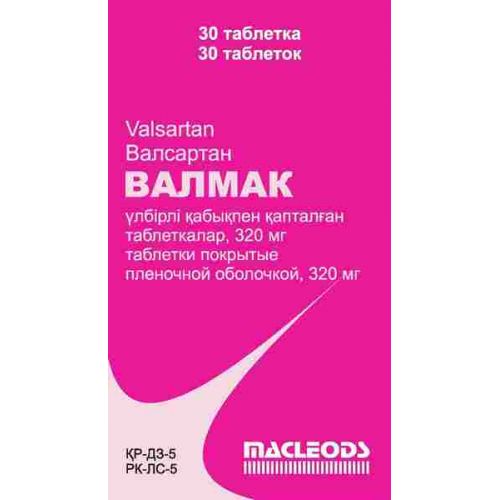
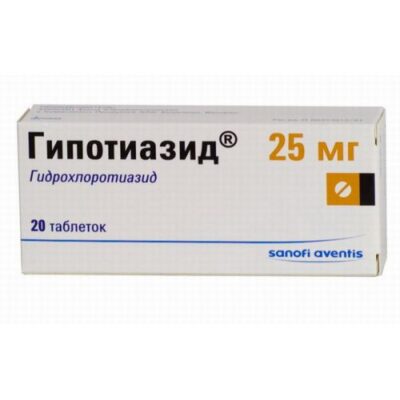
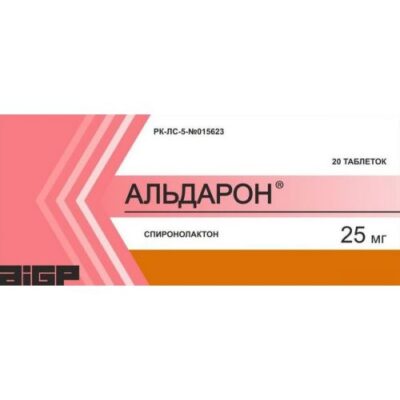

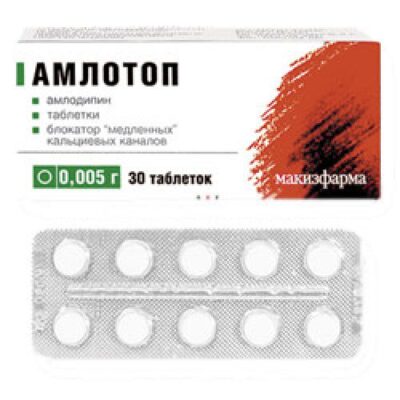
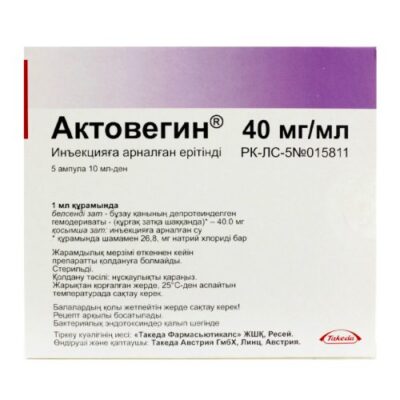
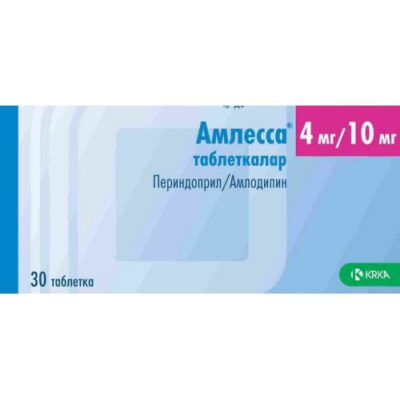
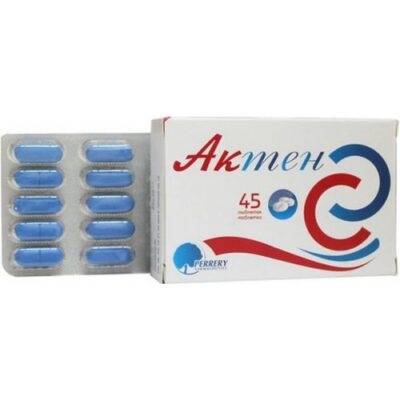
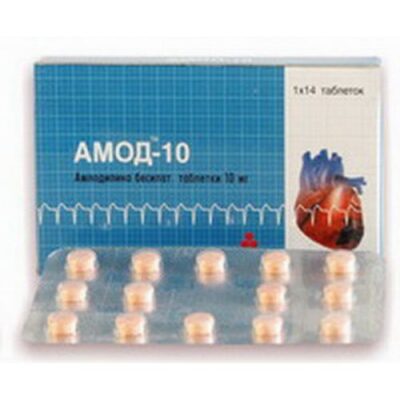
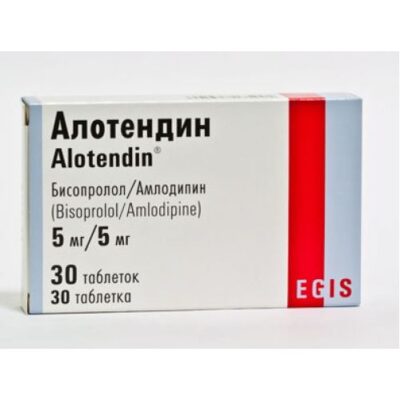
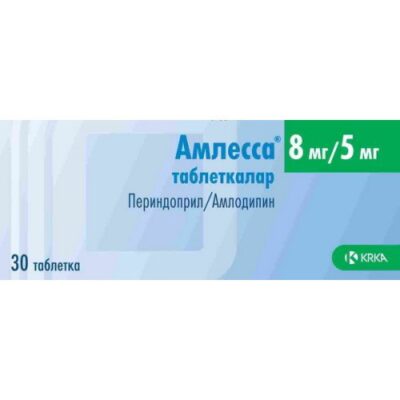






Reviews
There are no reviews yet.